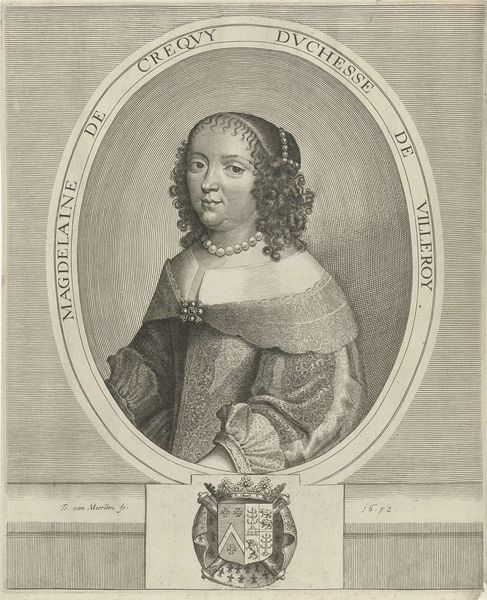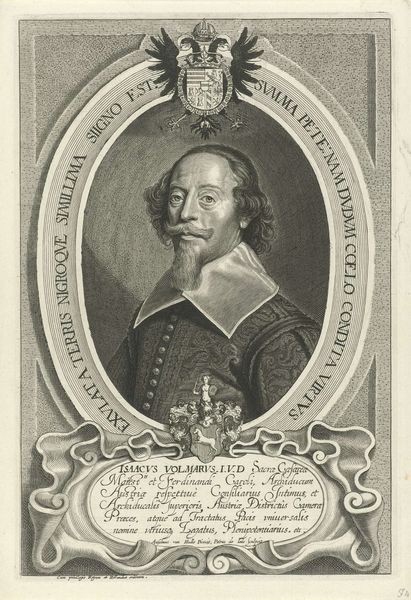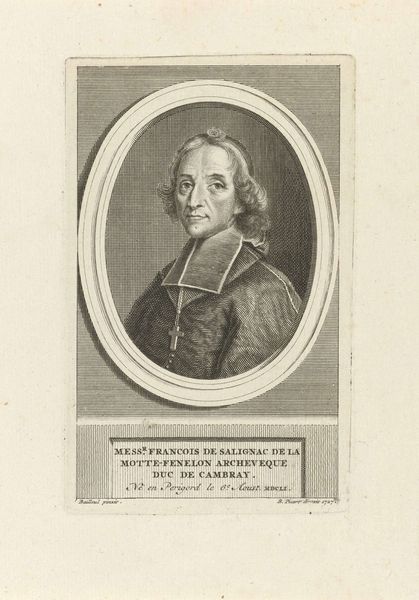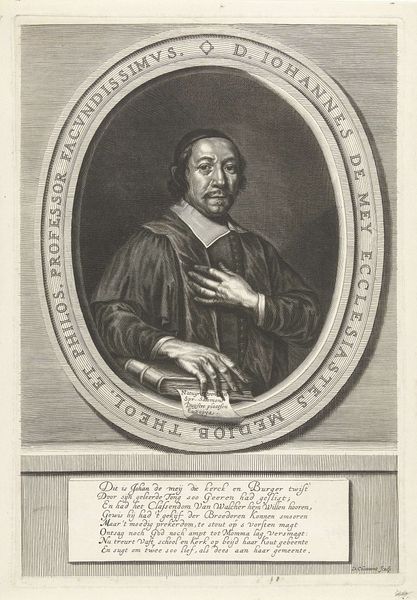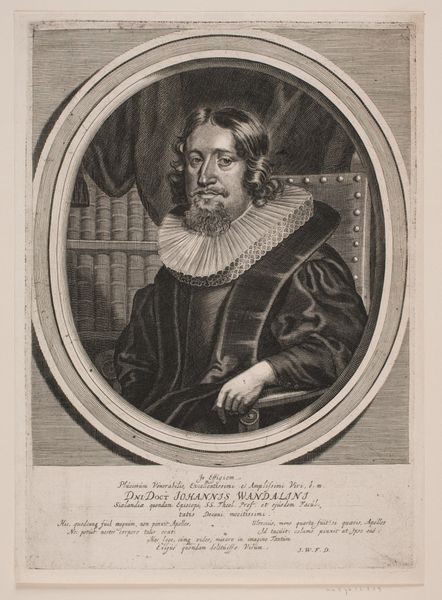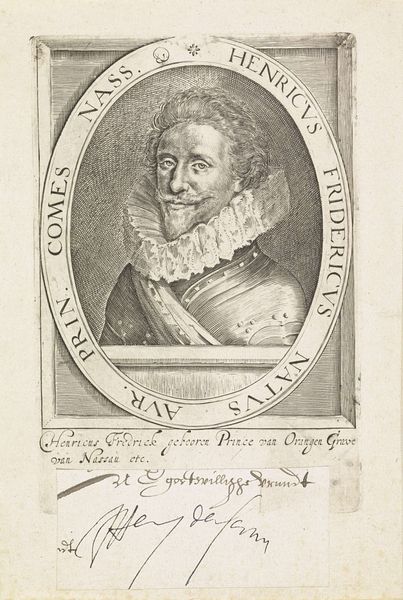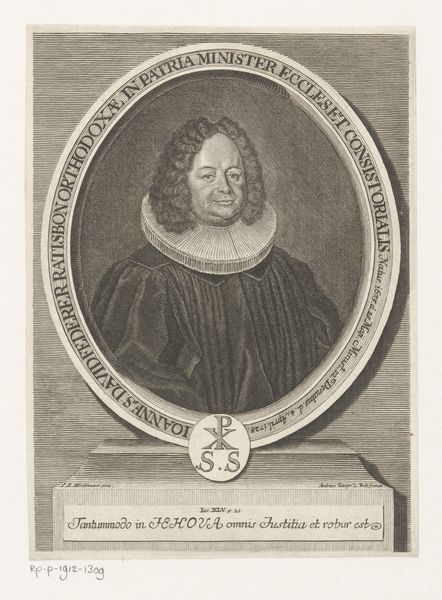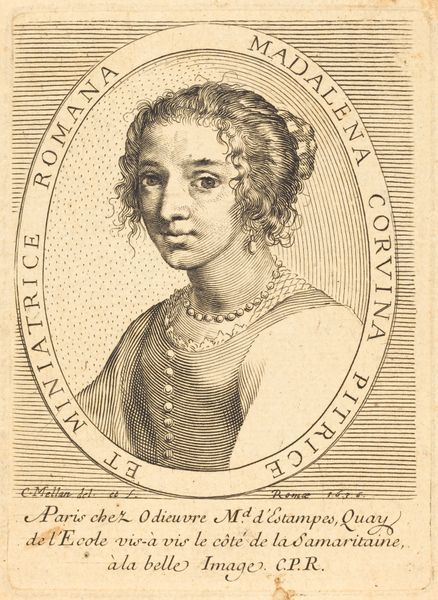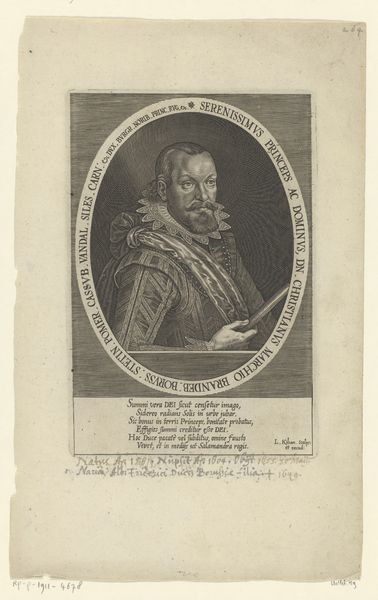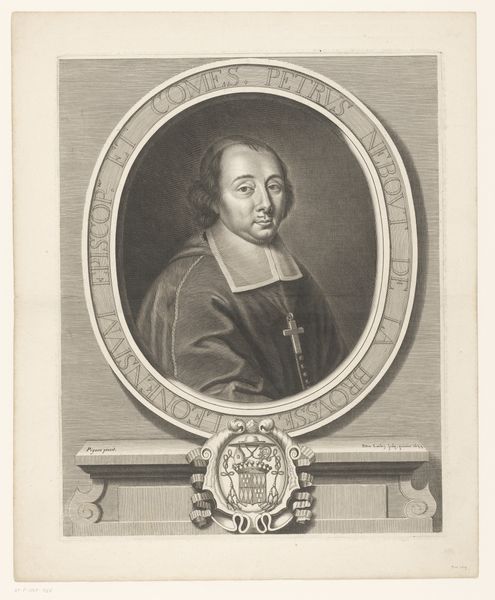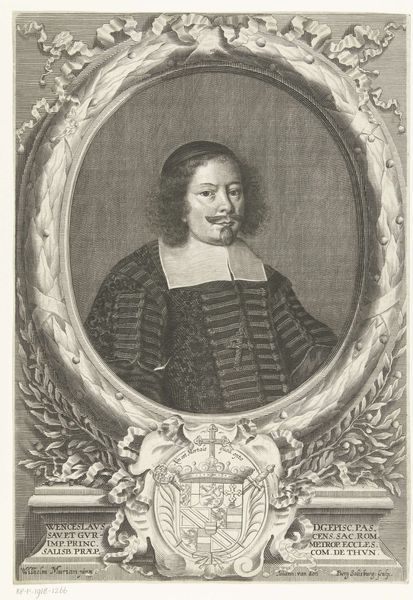
engraving
#
portrait
#
baroque
#
figuration
#
line
#
history-painting
#
engraving
Dimensions: height 307 mm, width 248 mm
Copyright: Rijks Museum: Open Domain
Curator: Let’s take a look at this engraving: *Portret van Charles de Neufville, markies van Villeroy* dating to 1652, created by Theodor van (II) Merlen. It's quite the image. Editor: My first impression is... formality! Look at that stiff pose, the elaborate lace collar, the careful lines around his mouth. Is that boredom or disapproval I detect in his eyes? It is beautifully etched, although a little stuffy for my taste. Curator: Well, the engraving format and Baroque style speak to a very specific set of representational codes. This wasn't about capturing Charles de Neufville's fleeting expression, it was about memorializing his status. That lace collar, the insignia, even the lettering circling the oval frame all contribute to the symbols of power. Editor: Right, I get that. It's almost like a historical meme. Every detail tells a story of rank and lineage. And the coat of arms at the bottom drives home the point, a symbolic shorthand. He seems aware of the weight of those symbols himself! Curator: Absolutely! In a society steeped in heraldry and visual cues of social standing, a portrait like this became a key tool for self-promotion and solidifying social place. Notice the precise use of line; it builds form and implies texture while meticulously recording the visual elements that mattered most to the sitter and the intended audience. Editor: But don't you think it also subtly conveys a sense of isolation? Despite all the finery and formality, the starkness of the engraving kind of hints at a person alone, defined by his title and rank. Almost like a prison of his own making. Ironic. Curator: A compelling interpretation! Perhaps it underscores the inherent tension between individual identity and the inherited roles imposed by aristocratic society, making this period engraving more compelling than first meets the eye. Thank you for sharing that! Editor: Well, thank *you* for bringing my attention to these pieces! It’s been nice, and insightful.
Comments
No comments
Be the first to comment and join the conversation on the ultimate creative platform.
